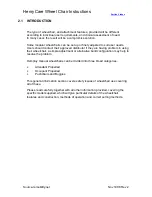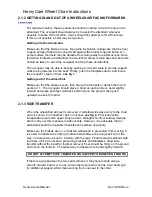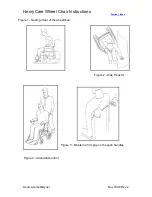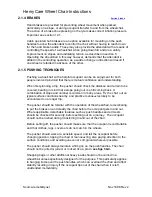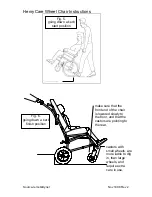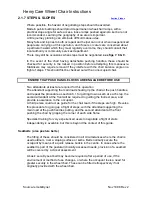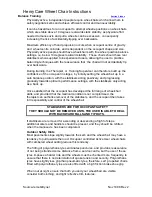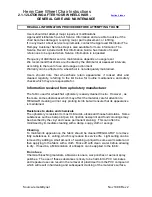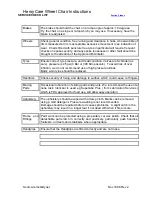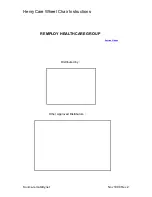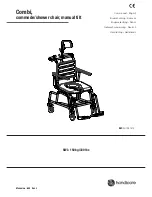
Nov 1998 Rev 2
2.1.6 KERBS
Section 2 Index
Negotiating a kerb.
The methods described here involve an attendant controlling the operation.
Active users adopt balancing techniques carry out kerb manoeuvres
independently, but methods will vary according to the setting of the chair, the
physical strength of the user and skills acquired through training and practice with
wheelchair experts. See section 8.
2.
Going down a kerb:
The chair castors should be taken to the edge of the kerb. The pusher should hold
the chair handles firmly, pressing down on the tipping lever and at the same time
tilting the chair back.
see fig 5.
The rear wheels can then be taken to the kerb edge and the foot removed from
the tipping lever. The chair is then lowered down the kerb on its rear wheels, with
the castor wheels facing rearwards,
this prevents them jamming up momentarily
as the chair starts to move
, before pivoting the chair gently to the ground, to face
direction of travel and then pushing forward.
Note:
The chair must not be tipped forward or the occupant may fall out.
When stabilisers have been fitted, this operation is more difficult to control, and
extra care should be taken.
Going up a kerb. First method.
The chair footplates, or occupant feet if longer, should be taken to just in front of
the kerb edge. The pusher should hold the chair handles firmly, pressing down on
the tipping lever, tilting the chair backwards using body weight leverage, bringing
chair forward till the back wheels touch the kerb.
The front castors wheels can then be lowered down onto the path, making sure
that the wheels are facing rearwards. With the push handles held firmly the
attendant should now lift and push the chair.
Going up a kerb. Second method.
The chair should be turned round so that the back wheels are against the kerb
and the attendant should hold the pushing handles firmly and tip the chair
backwards.
Using body weight as leverage the attendant should then pull the chair off the
kerb and up onto the pavement, making sure, as above that the castor wheels are
facing rearwards .
The chair may then be pivoted to face the direction of travel and pushed forward.
HenryCare Wheel Chair Instructions
Source-remobility.net


